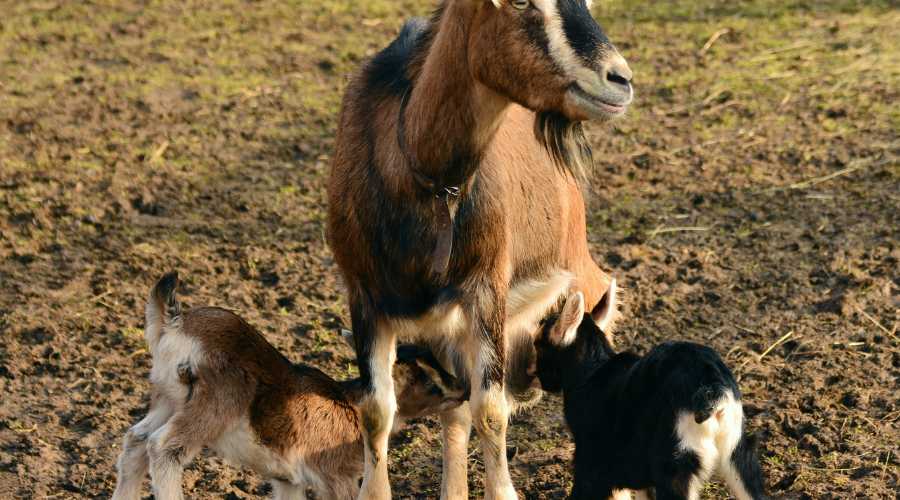Goat farming has become an increasingly important aspect of modern agriculture, providing a range of products such as meat, milk, and fiber to consumers worldwide.
In addition to its economic benefits, goat farming is also recognized for its environmental advantages and positive impact on social and health aspects.
This comprehensive guide is designed to help beginners understand the process of starting a goat farm, covering everything from selecting the right breed to marketing your products.
Choosing the Right Breed of Goats
Before embarking on your goat farming journey, it’s crucial to determine the purpose of your farm.
Different breeds of goats excel in various areas, including milk production, meat production, fiber production, and landscaping or grazing.
Once you’ve identified your farm’s primary goal, you can choose a suitable breed that thrives in your local climate.
Some popular goat breeds include:
- Nigerian Dwarf (milk)
- Nubian (milk and meat)
- Boer (meat)
- Angora (fiber)
- Spanish (grazing and meat).
Research each breed’s characteristics, strengths, and weaknesses to make an informed decision.
Remember that some breeds may be more adaptable to certain climates, so consider your region’s weather patterns when making your choice.
Planning Your Goat Farm
Assessing Your Budget
Starting a goat farm requires a significant financial investment. Make sure you have a comprehensive understanding of the costs involved in setting up and operating your farm, including land acquisition, infrastructure, feed, health care, and labor.
Acquiring Land
When choosing a suitable location for your goat farm, consider the size, terrain, and vegetation.
Goats are versatile animals that can adapt to various terrains, but they typically prefer hilly or mountainous areas with ample vegetation.
You’ll need enough space for housing, grazing, feed storage, and waste management.
Infrastructure Requirements
Goat Housing: Your goats will need shelter to protect them from the elements and predators. Housing should be well-ventilated, dry, and clean.
Consider factors such as space requirements, flooring, and access to clean water when designing your goat housing.
- Fencing and Security: Goats are known for their curiosity and agility, so secure fencing is essential. Choose a fencing option that suits your budget and land’s terrain, such as woven wire, electric fencing, or high-tensile wire. Ensure the fencing is sturdy and high enough to prevent escapes or predator invasions.
- Feed Storage: Designate a dedicated area to store feed, ensuring it remains dry and protected from rodents.
- Waste Management: Plan for efficient waste management, as manure and bedding can be used as fertilizer or composted.
Feeding and Nutrition
Understanding the Dietary Needs of Goats
Goats are ruminants, meaning they have a specialized digestive system that requires a balanced diet of forage, supplements, minerals, and vitamins. Your goats’ diet will directly impact their health, productivity, and longevity.
Types of Feed
- Forage: Fresh pasture, hay, or silage should make up the bulk of your goats’ diet. Ensure the forage you provide is of good quality and free from toxic plants or weeds.
- Supplements: Depending on your goats’ nutritional needs, you may need to provide additional supplements such as grains, pellets, or concentrates. These should be used to complement forage and not as the primary food source.
- Minerals and Vitamins: Goats need a balanced intake of minerals and vitamins, which can be provided through free-choice mineral blocks, loose minerals, or premixed feeds.
Developing a Feeding Plan
Consult with a veterinarian or a livestock nutritionist to create a feeding plan tailored to your goats’ specific needs.
Factors to consider include the breed, age, weight, reproductive status, and purpose of your goats (meat, milk, or fiber production). Regularly evaluate and adjust the feeding plan as needed.
Health and Wellness
Basic Health Care for Goats
- Vaccinations: Vaccinate your goats to protect them against common diseases. Consult with a veterinarian to determine the necessary vaccines for your herd.
- Parasite Control: Regularly check your goats for internal and external parasites, and administer deworming medications and insecticides as needed.
- Hoof Care: Trim your goats’ hooves every 6-8 weeks to prevent overgrowth and infection.
Common Goat Illnesses and Prevention
Some common goat illnesses include pneumonia, diarrhea, mastitis, and contagious ecthyma (sore mouth). To prevent these diseases, maintain a clean living environment, provide proper nutrition, and practice good biosecurity measures.
Working with a Veterinarian
Establish a relationship with a local veterinarian experienced in goat care. Regular check-ups, consultations, and emergency care will be crucial in maintaining your goats’ health.
Breeding and Reproduction
Selecting Breeding Stock
Choose healthy, high-quality breeding stock to improve your herd’s productivity and genetic potential. Consider factors such as pedigree, conformation, and production history when selecting your breeding animals.
Mating Strategies
You can choose between natural mating or artificial insemination. Natural mating involves keeping a buck with your does during the breeding season, while artificial insemination requires purchasing semen from a reputable source and working with a trained professional.
Pregnancy and Kidding
Monitor your pregnant does closely, providing proper nutrition and a comfortable environment. Familiarize yourself with the signs of labor, and be prepared to assist during the birthing process if necessary.
Caring for Newborn Goats
Ensure newborn goats receive colostrum within the first few hours of life, keep them warm and dry, and monitor their health closely during the first weeks.
Marketing and Sales
Identifying Potential Markets
Explore different market options, such as local farmers’ markets, online platforms, or specialty shops. You may also consider selling directly to consumers, restaurants, or processors.
Product Development and Diversification
Develop a diverse range of products to cater to various consumer needs. For example, if you’re primarily a dairy goat farm, consider producing cheese, yogurt, or soap in addition to fresh milk.
Pricing Strategies
Research your competitors’ pricing, and set prices that reflect the quality and uniqueness of your products while remaining competitive in the market.
Building Relationships with Buyers
Establish strong relationships with your buyers by providing exceptional customer service, consistently high-quality products, and timely communication.
Legal and Regulatory Considerations
Understanding Local Zoning Laws and Regulations
Familiarize yourself with local zoning laws and regulations that apply to your goat farm, ensuring your operations are compliant with all relevant rules.
Obtaining Necessary Permits and Licenses
Secure any necessary permits and licenses for your goat farm, such as business licenses, building permits, and health department approvals.
Record Keeping and Tax Implications
Maintain accurate records of your farm’s income, expenses, and inventory for tax purposes and to track your farm’s progress.
Conclusion
Starting and running a successful goat farm can be a rewarding experience, but it requires dedication, hard work, and continuous learning.
Network with other goat farmers and industry professionals to stay informed of best practices and new developments in goat farming.








